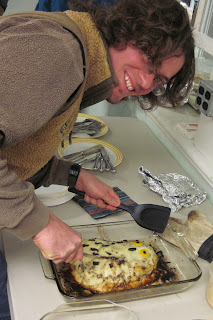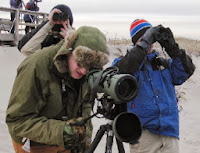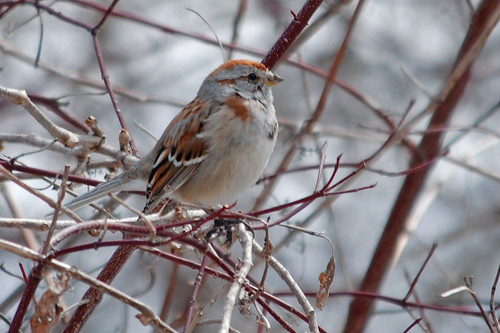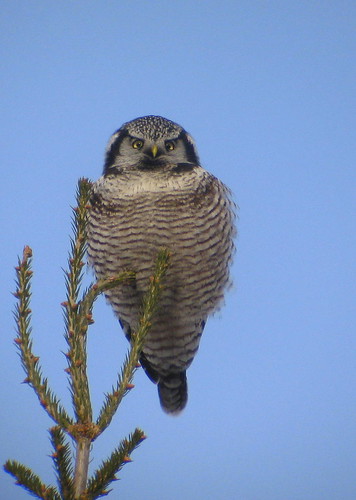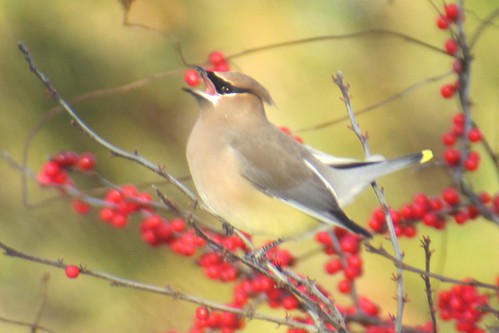 |
| Recaptures between |
Much to our excitement, this season we had three foreign
recaptures (owls that had already been banded at other banding stations). One owl captured October 24, had been banded
in Montreal, Canada just 16 days earlier.
And two other owls, captured October 24 and November 4, had been banded
last fall near Allentown, PA (within 15 miles of each other). With each recapture, will help reveal how Saw-whets
utilize Vermont during their journey south.
While this was only our pilot year of owl banding, we can
still learn a lot from the owls we caught.
At our Shelburne Bay site, only around 12% of our captures were of
hatch-year birds (those born this past spring and summer). This low proportion of young individuals
typically occurs in years of food shortage on the breeding grounds, during
which few young owls are born. Other
Saw-whet banding stations in the east experienced a similar lack of hatch-year
birds this fall, along with low numbers of migrants overall.
At the NBNC station, however, hatch-year birds accounted for
a much higher percentage of captures at 38%.
It is possible that owls migrating through NBNC come from a different
population than those migrating through Shelburne Bay, accounting for a
difference in natal productivity and hence the differing proportion of
hatch-year birds. This is hard to confirm,
but it is interesting to think about how the geography of Vermont’s landscape
may funnel owls from different populations through different migratory
corridors.
In keeping with NBNC’s devotion to education and outreach,
over 200 kids and adults visited the banding stations in Shelburne and
Montpelier to observe science in action.
It is our hope that this unique opportunity both deepens participants’
interest in nature and empowers them to do something positive for the
environment. Thanks to everyone who visited the banding stations this fall, and special thanks to
volunteers Mattias Sirch, Abby Sirch, Rebecca Gray, and Aileen Lennon.
 |
| Photo by Brian Jenkins, 3rd Stone Images |





